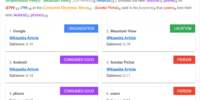What Payment Security Features Does WooCommerce Offer to Protect Your Customers?

WooCommerce offers robust payment security features. These features include encryption, tokenization, fraud detection, secure payment gateways, two-factor authentication, PCI compliance, and a data breach response plan.
These features work together to ensure that your customers' payment information is protected.
Encryption
Encryption is a crucial security measure that you can optionally implement in WooCommerce to protect sensitive payment information. By encrypting data, you ensure that it's transformed into a format that's unreadable to unauthorized individuals. This helps safeguard your customers' personal and financial details from potential cyber threats.
One way to implement encryption in WooCommerce is through the use of SSL certificates. SSL, or Secure Sockets Layer, is a protocol that establishes a secure connection between a web server and a browser. It encrypts the data transmitted between these two entities, ensuring its privacy and integrity.
To enable SSL encryption in WooCommerce, you need to obtain an SSL certificate from a trusted Certificate Authority. This certificate will verify the identity of your website and enable secure communication with your customers. Once installed, your website's URL will change from 'http://' to 'https://', indicating that a secure connection is established.
By encrypting data using SSL certificates, you provide an additional layer of protection for your customers' sensitive information. This not only helps build trust with your customers but also reduces the risk of data breaches and potential financial losses for your business.
Implementing data encryption through SSL certificates is an essential security measure that you should consider in WooCommerce to protect your customers' payment information.
Tokenization
Tokenization is a crucial security measure in WooCommerce that protects cardholder data by replacing sensitive information with unique tokens.
This process ensures that customer data isn't stored on your website, reducing the risk of data breaches and unauthorized access.
With tokenization, you can provide a secure payment processing experience for your customers while implementing fraud prevention measures to safeguard against fraudulent activities.
Security of Card Data
To enhance the security of card data in WooCommerce, an effective approach is to utilize a method known as tokenization. Tokenization involves replacing sensitive card data with a unique identifier called a token. This token is then used to process transactions, while the actual card data is securely stored in a separate system. By implementing tokenization, you can ensure payment card industry compliance and protect your customers' data from unauthorized access.
Here is a table outlining the key benefits of tokenization in WooCommerce:
| Benefits of Tokenization | Explanation |
|---|---|
| Enhanced security | Tokenization removes sensitive card data from your system, reducing the risk of data breaches. |
| Simplified PCI compliance | As card data is not stored in your system, the scope of PCI compliance requirements is significantly reduced. |
| Streamlined payment process | With tokenization, customers can make future purchases without re-entering their card details, improving convenience and user experience. |
Fraud Prevention Measures
To further safeguard against fraud, implementing fraud prevention measures such as tokenization is crucial in maintaining the security of card data in WooCommerce. Tokenization is a technique that replaces sensitive cardholder data with a unique identifier, known as a token, which is used for transaction processing.
Here are three sub-lists outlining the benefits of tokenization:
- Enhanced Security: Tokenization ensures that sensitive card data isn't stored on WooCommerce's servers, reducing the risk of data breaches and unauthorized access.
- Simplified PCI Compliance: By tokenizing card data, WooCommerce reduces its PCI scope, as the actual cardholder data is no longer stored in the system.
- Customer Convenience: With tokenization, customers can securely store their card details for future purchases, eliminating the need to re-enter information each time.
Secure Payment Processing
Implement secure payment processing in WooCommerce by utilizing tokenization, a powerful technique that enhances data security and simplifies PCI compliance.
Tokenization ensures that sensitive payment information, such as credit card numbers, is replaced with unique tokens. These tokens are then used to process payments, eliminating the need to store actual card data on your site.
By employing tokenization, you can provide your customers with secure payment methods, building trust and confidence in your online store. Additionally, tokenization simplifies PCI compliance by reducing the scope of sensitive data that needs to be protected.
With tokenization in place, you can reassure your customers that their payment information is secure, further enhancing their trust in your business.
Fraud Detection
Detect and prevent fraudulent transactions with the built-in fraud detection features in WooCommerce. These advanced features use machine learning algorithms and transaction monitoring to identify suspicious activities and protect your customers.
Here are three ways WooCommerce helps you combat fraud:
- Real-time transaction monitoring: WooCommerce constantly monitors each transaction in real-time, analyzing various data points such as customer behavior patterns, IP addresses, and device information. This allows it to quickly flag any transactions that appear fraudulent or suspicious.
- Machine learning algorithms: WooCommerce utilizes machine learning algorithms to continuously learn from historical transaction data and identify patterns of fraudulent behavior. As these algorithms gather more data, they become more accurate in detecting potential fraudulent transactions.
- Customizable fraud rules: WooCommerce allows you to set up customizable fraud rules and thresholds based on your specific business needs. You can specify criteria such as maximum transaction amount, shipping address verification, or unusual order patterns. This gives you greater control over the fraud detection process and helps prevent fraudulent transactions from occurring.
Secure Payment Gateways
Secure Payment Gateways provide a safe and reliable way for customers to make online transactions on your WooCommerce store. These gateways ensure that sensitive payment information is protected through advanced encryption techniques, allowing for secure transactions. By integrating secure payment gateways into your WooCommerce store, you can offer your customers peace of mind knowing that their personal and financial information is being securely transmitted and stored.
Payment encryption is a key feature of secure payment gateways. This encryption technology scrambles the payment information during transmission, making it unreadable to unauthorized individuals. It ensures that customer data remains confidential and protected from potential threats.
In addition to payment encryption, secure payment gateways also offer additional security measures to prevent fraudulent transactions. They use sophisticated fraud detection tools and systems to identify and block suspicious activities, helping to safeguard both your customers and your business from potential fraud risks.
Two-Factor Authentication
To enhance the security of online transactions, WooCommerce offers the feature of Two-Factor Authentication (2FA). This powerful security measure provides an extra layer of protection by requiring users to provide two forms of authentication before accessing their accounts or making payments.
Here are the key benefits of using Two-Factor Authentication in WooCommerce:
- Multi-factor authentication: With 2FA, users are required to provide two separate pieces of information to prove their identity. This typically includes something they know (such as a password) and something they've (such as a unique code sent to their mobile device). This significantly reduces the risk of unauthorized access even if passwords are compromised.
- Biometric authentication: Many modern devices support biometric authentication methods, such as fingerprint or facial recognition. WooCommerce leverages these capabilities, allowing users to authenticate their transactions using their unique biometric data. This provides an additional layer of security, as biometric features aren't easily replicable.
- Enhanced security: By implementing Two-Factor Authentication, WooCommerce helps protect your customers' personal and financial information from unauthorized access or fraudulent activities. This not only safeguards their sensitive data but also helps build trust and confidence in your online store.
PCI Compliance
To ensure the secure handling of payment information, WooCommerce provides robust tools for achieving PCI compliance. PCI compliance refers to the set of standards established by the Payment Card Industry Security Standards Council (PCI SSC) to ensure the secure processing, storage, and transmission of payment card data. By adhering to these standards, WooCommerce helps merchants protect their customers' payment information and maintain a secure payment processing environment.
WooCommerce offers a range of features and functionalities to help merchants achieve PCI compliance. Firstly, it ensures that all payment transactions are encrypted using SSL (Secure Sockets Layer) technology. This means that sensitive data, such as credit card numbers, are securely transmitted and can't be intercepted by unauthorized parties.
Additionally, WooCommerce integrates with trusted payment gateways that are already PCI compliant. These gateways handle the actual processing of payment transactions, which further reduces the merchant's responsibility for PCI compliance.
Furthermore, WooCommerce provides tools for securely storing payment information. Merchants can choose to store customer card data on their own servers or use tokenization services provided by payment gateways. Tokenization replaces actual card data with a unique identifier, reducing the risk of unauthorized access to sensitive information.
Data Breach Response Plan
Now it's time to address the important topic of your data breach response plan.
This plan consists of two key components: your incident management process and your communication strategy.
The incident management process outlines the steps you'll take to identify, contain, and mitigate the effects of a data breach.
The communication strategy focuses on how you'll inform and support your customers and stakeholders throughout the incident.
Incident Management Process
Implement an effective incident management process by developing a comprehensive data breach response plan. This plan will help you handle any security incidents that may occur and ensure that your customers' information is protected. Here are three key steps to include in your plan:
- Customer Support: Establish a dedicated support channel to assist customers who may be affected by a data breach. Provide clear instructions on how to report any suspicious activity and promptly respond to their concerns.
- Incident Reporting: Create a standardized process for reporting security incidents. This should include clear guidelines on what constitutes an incident, who to notify, and the necessary steps to mitigate and investigate the breach.
- Communication Strategy: Develop a communication strategy to keep your customers informed throughout the incident. This should include regular updates on the status of the breach, steps you're taking to address it, and any actions customers need to take to protect themselves.
Communication Strategy
Develop a clear and concise communication strategy to ensure effective communication with your customers during a data breach incident.
In the unfortunate event of a data breach, swift and transparent communication is crucial to maintain customer trust and minimize the impact on their user experience.
Start by notifying affected customers promptly, providing them with clear information about the breach and its potential impact on their personal data.
Offer reassurance by outlining the steps you're taking to address the situation and enhance your security measures.
Be prepared to address customer concerns and inquiries promptly through dedicated channels such as email, phone, or live chat.
Provide regular updates to keep customers informed of progress and resolutions.
Frequently Asked Questions
How Does Woocommerce Handle Refunds and Chargebacks in Terms of Payment Security?
When it comes to refunds and chargebacks, WooCommerce has got you covered. They have clear refund policies for digital products and strategies in place to minimize chargebacks, ensuring payment security for you and your customers.
Can Woocommerce Protect Against Unauthorized Access to Customer Payment Information?
To ensure customer trust, WooCommerce implements measures to prevent unauthorized access to customer payment information. This helps protect your customers' sensitive data and keeps their information secure.
Does Woocommerce Provide Any Fraud Prevention Tools or Services?
WooCommerce offers fraud detection and payment verification tools to protect your customers. These services help detect and prevent fraudulent transactions, ensuring secure and reliable payment processing for your online business.
What Security Measures Does Woocommerce Have in Place to Protect Against Data Breaches?
To protect against data breaches, WooCommerce implements important security measures. It emphasizes the use of SSL certificates to ensure secure payment transactions. Following best practices, it secures customer payment data, providing peace of mind for your customers.
Is Two-Factor Authentication Available for Both Customers and Merchants Using Woocommerce?
Using two-factor authentication is crucial for online transactions. It enhances payment security by requiring an extra verification step, providing an additional layer of protection against unauthorized access to customer and merchant accounts on WooCommerce.









